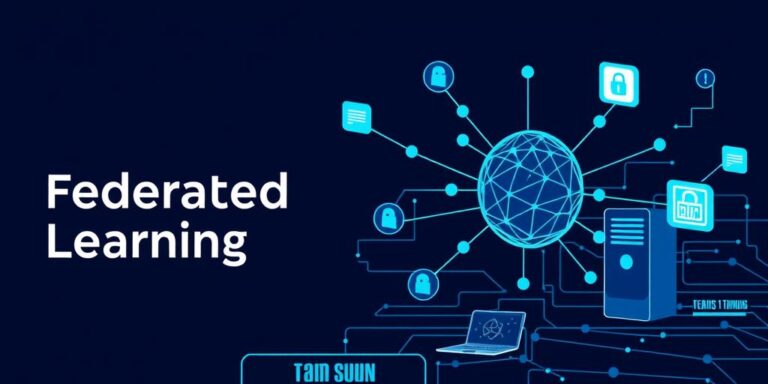Federated Learning: Training AI Without Compromising Privacy (2025+)
In an increasingly data-driven world, the ability to train artificial intelligence (AI) models is paramount. However, the conventional approach often involves centralizing data, which raises significant privacy concerns. Federated learning (FL) offers a revolutionary solution by enabling AI models to learn from decentralized data residing on users’ devices or edge servers, without directly accessing or sharing the raw data. This article explores the principles, benefits, challenges, and future trends of federated learning.
What is Federated Learning?
Federated learning is a distributed machine learning technique that trains an algorithm across multiple decentralized devices or servers holding local data samples. Unlike traditional centralized machine learning, federated learning does not require the direct transfer of data to a central server. Instead, each device trains a local model using its data, and only the model updates are transmitted to a central server. These updates are then aggregated to create a global model, which is shared back with the devices. This process is repeated iteratively until the global model converges to a satisfactory performance level.
Key Benefits of Federated Learning
- Enhanced Privacy: By keeping the raw data on the user’s device, federated learning significantly reduces the risk of data breaches and privacy violations. Only model updates, which do not contain sensitive information, are shared with the central server.
- Data Security: Since data does not need to be transferred to a central location, federated learning minimizes the attack surface for malicious actors.
- Reduced Bandwidth and Storage Costs: Federated learning eliminates the need to transfer large volumes of data to a central server, reducing bandwidth consumption and storage costs.
- Improved Model Generalization: By training on diverse datasets distributed across multiple devices, federated learning can improve the generalization ability of AI models, making them more robust and accurate.
- Regulatory Compliance: Federated learning can help organizations comply with stringent data privacy regulations, such as GDPR and CCPA, by minimizing the need to access and process sensitive data.
Challenges of Federated Learning
- Communication Costs: Transmitting model updates between devices and the central server can be expensive, especially in low-bandwidth environments.
- System Heterogeneity: Federated learning systems often involve devices with different computational capabilities and network connectivity, which can make it challenging to ensure efficient training.
- Statistical Heterogeneity: Data distributions across devices can vary significantly, leading to biased models if not addressed properly.
- Security Risks: While federated learning enhances privacy, it is not immune to security threats. Malicious actors can potentially inject poisoned model updates to compromise the global model.
- Incentive Mechanisms: Encouraging devices to participate in federated learning can be challenging, especially if the benefits are not immediately apparent.
Future Trends in Federated Learning
- Differential Privacy: Combining federated learning with differential privacy techniques to provide stronger privacy guarantees.
- Personalized Federated Learning: Developing techniques to personalize global models for individual users while still preserving privacy.
- Federated Transfer Learning: Leveraging knowledge learned from one federated learning task to improve the performance of another task.
- Blockchain-based Federated Learning: Using blockchain technology to ensure secure and transparent aggregation of model updates.
- Edge Computing: Integrating federated learning with edge computing to enable real-time AI processing at the edge of the network.
Conclusion
Federated learning represents a paradigm shift in the way AI models are trained, offering a promising solution to the growing tension between data privacy and the need for powerful AI. As the technology matures and the challenges are addressed, federated learning is poised to become a cornerstone of AI development in the coming years, enabling organizations to unlock the full potential of their data while safeguarding user privacy.




